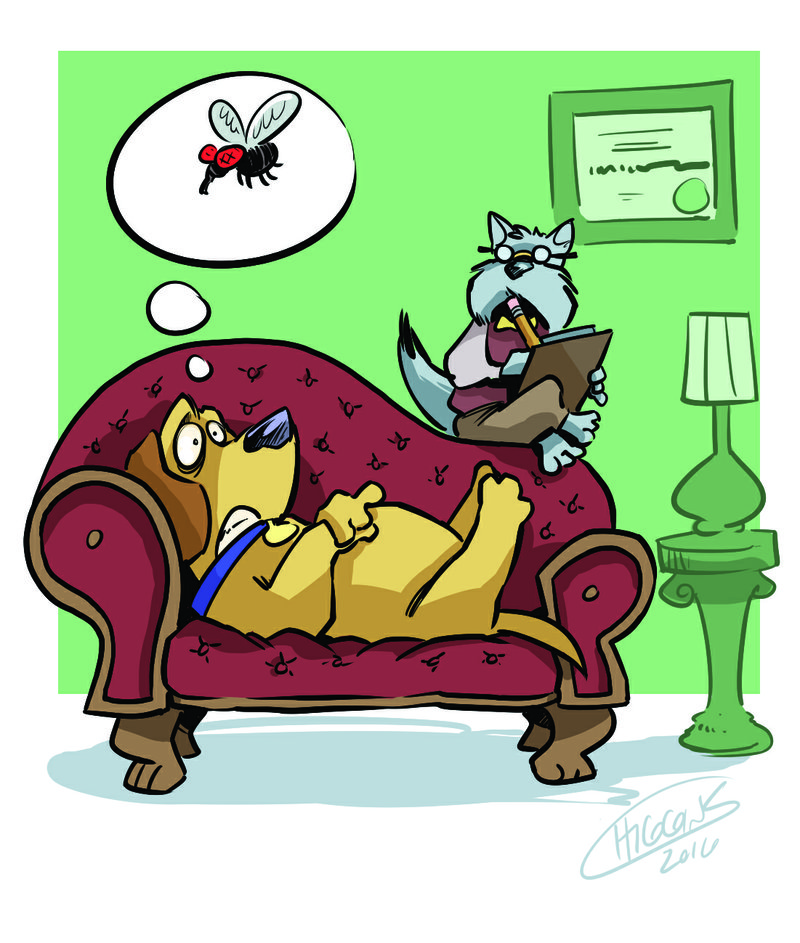Bookshelves in stores and libraries are filled with self-help books addressing human problems, but there also are a fair number of books devoted to explaining and analyzing our pets' behavior. Now there's a book that's appropriate for both areas, a sort of self-help book for people with pets: Pets on the Couch: Neurotic Dogs, Compulsive Cats, Anxious Birds, and the New Science of Animal Psychiatry by veterinary behaviorist Nicholas Dodman.
As founder of the Animal Behavior Clinic at the Cummings Veterinary Medical Center at Tufts University, Dodman studies and identifies similarities in human and animal psychological issues. In his new book, he combines his experiences and observations with case studies of animals he has treated to illustrate the supposition that animals have human qualities. The book is filled with stories about animals with psychiatric issues -- anxiety, obsessive-compulsive behavior, phobias, aggression -- that he has successfully treated using his "One Medicine" approach.
Despite the name of the book, there's no "talk therapy" for the animals in which they are expected to reach some level of understanding about their problems. Dodman doesn't argue that pets are self-aware in that respect, but simply that physiologically they can get relief from their issues by being given the same medications that work for people.
"Can we treat animal behavior with the same medicines, therapies and approaches we use on humans? To me, the answer is an obvious yes," Dodman writes, while noting that the brains of dogs could be used to teach medical students about human brain anatomy. "We share physical similarities and we process and respond to incoming sensory information in much the same ways."
The most interesting aspects of Dodman's book are the case studies -- among them an obsessive-compulsive horse that chews on fences, a dog with post-traumatic stress disorder after being shot by a police officer, a bulimic gorilla, cats and birds that compulsively over groom to the point of baldness, and a Labrador afraid of flies.
The fly fearing dog's phobia developed during one -- just one --swimming trip. At some point during the trip, the dog's owners noticed the dog was missing. They soon found her under a blanket, acting afraid and hiding from some unseen threat. Later, they noticed that she went into a panic if a fly came into the house.
The dog's owners and Dodman decided that she had been bitten by flies during the swimming trip. They considered behavior modification and other therapies, but ultimately decided to allow Dodman to try an anti-anxiety medication. After some trial-and-error, he hit upon a combination of an anti-anxiety drug and beta blocker that worked, which was fortunate because the dog's owners were so distressed by the dog's problem that they had considered euthanasia.
Other case studies touch on disorders that mimic human problems. A normally sweet dog that flies into sudden rages, for example, could have a seizure disorder. A horse that turns around and around and bites itself on its flanks when there are no flies about could have a form of Tourette syndrome. Some animals' phobias are suggestive of an autistic person's irrational fears. In all cases, Dodman found human medications useful in helping to resolve the animals' issues.
Dodman's writing style is engaging and entertaining, plus he manages to make complicated medical issues interesting and easy to understand. He incorporates the perspectives of scientists, behaviorists, geneticists and pet owners so that the book never gets bogged down in jargon, theory or one point of view.
People who are merely interested in animal behavior will enjoy the book, but Dodman's work could also offer hope and new ideas for people struggling to deal with a behaviorally challenged pet.
Family on 09/14/2016
